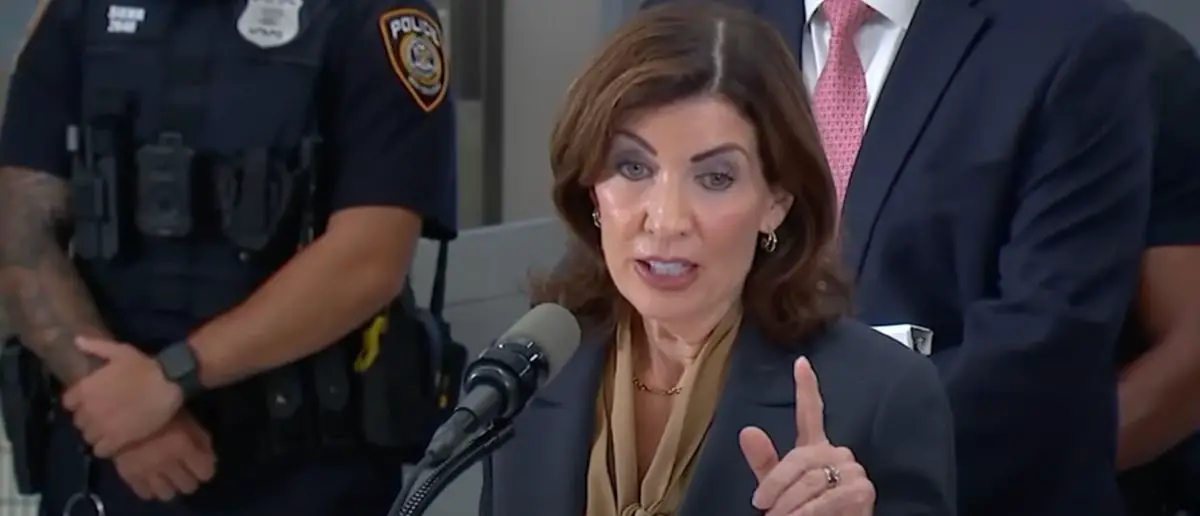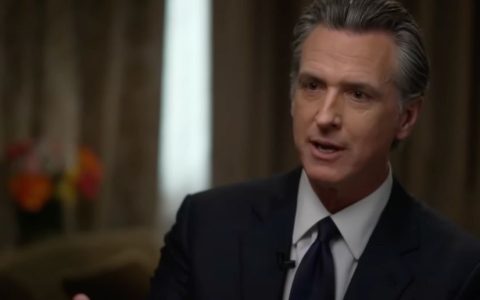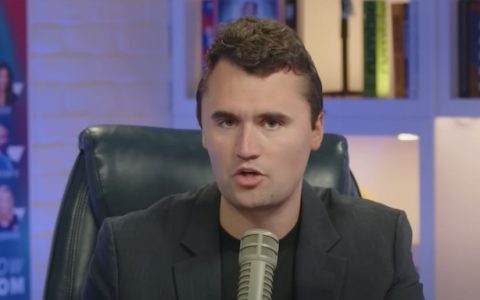
The Democrats are up a creek with no paddle. Now they’re about to capsize.
Because a CNN host buried the Democrats once and for all with just two words.
Recent polling data indicates that public opinion of the Democratic Party has reached an all-time low, with CNN’s chief data analyst Harry Enten describing “the Democratic brand” as severely tarnished during a Friday broadcast.
Surveys conducted by The Wall Street Journal, CNN, and Gallup reveal unprecedented levels of disapproval for the Democratic Party. On “CNN News Central,” Enten highlighted the absence of a strong presidential candidate for the Democrats, a stark departure from past election cycles.
“Democrats at this point are historically divided. It is a complete and utter mess. It is messier than a hoarder’s basement,” Enten said. “What are we talking about here? The national early poll leader — 25% plus. Normally, that’s where Democrats are. [Joe] Biden was at 25% plus in 2020. Hillary Clinton was in ’08 and ’16. [Al] Gore was in ’00 and ’04.”
“No single candidate in the Democratic presidential race is polling above 25% at this stage,” he added. “The water is quite warm. If you’re a Democrat potentially thinking about running in 2028, jump right in — because at this point there is no front-runner.”
When host Kate Bolduan questioned whether the lack of a leading candidate stemmed from negative views of the party, Enten responded affirmatively. “I think that that is in large part of what’s going on is one of the reasons why there is no front-runner, nobody wants to put anybody up at the top of their ballot list, is because at this particular point, the Democratic brand is in the basement,” Enten said. “It is total and complete garbage in the mind of the American public.”
“The Democratic Party’s net favorable rating — record lows in all three. Wall Street Journal, 30 points underwater. CNN, 26 points underwater. Gallup, 26 points underwater,” he noted. “And that is being driven in large part by discontent within the Democratic base. The Democratic base wants something different.”
Chris Cillizza, a political commentator for NewsNation, echoed these concerns in a Monday post on his “So What” Substack, describing the Democratic Party as facing a critical identity crisis due to its historically poor favorability ratings.
“People have no idea really what the Democratic Party stands for. And to the extent that they think they know, they don’t like it, right? So, it’s weak, it’s woke and it’s anti-[President Donald]Trump,” he said. “That’s what people will say about the Democratic Party. That is not getting it done.”
A May poll by Puck/Echelon further revealed that likely voters often see the Democratic Party as “liberal, weak, corrupt.” Even among Democratic and Democratic-leaning voters, the term “weak” was frequently cited. Additionally, a Quinnipiac University poll from July 16 showed that only 19% of voters approved of Democrats in Congress, the lowest approval rating ever recorded by the outlet.
The Democratic Party’s Declining Popularity
The Democratic Party’s favorability has plummeted to historic lows, as evidenced by multiple polls conducted in 2025. The Wall Street Journal reported a net favorable rating of minus 30 points, while CNN and Gallup both recorded minus 26 points. These figures represent a significant decline from previous years, signaling widespread dissatisfaction among the American public.
A key factor contributing to this downturn is the party’s lack of a clear message or identity. Political analysts, including Chris Cillizza, have noted that voters struggle to define what the Democratic Party stands for. Perceptions of the party as “weak” or “woke” have gained traction, alienating both moderate and progressive voters. A Puck/Echelon poll conducted in May 2025 found that even Democratic-leaning voters frequently described the party as ineffective.
The absence of a strong presidential front-runner for 2028 further exacerbates the party’s challenges. Historically, Democratic candidates like Joe Biden, Hillary Clinton, and Al Gore commanded significant early support in national polls. In contrast, no current Democratic contender is polling above 25%, a threshold typically met by past front-runners.
Economic concerns have also played a role in the Democrats’ declining popularity. Web searches reveal that many Americans associate the party with policies perceived as out of touch with working-class voters. Rising inflation and housing costs in recent years have fueled frustration, with some voters blaming Democratic governance. A July 2025 Quinnipiac University poll reported that only 19% of voters approved of Democrats in Congress, a record low that highlights public disillusionment.
Internal divisions within the Democratic base are another critical issue. Progressives and moderates remain at odds over policy priorities, from climate change to healthcare reform. This lack of cohesion has weakened the party’s ability to present a unified front, further eroding its public image. Polls indicate that even loyal Democratic voters are increasingly dissatisfied, with many calling for a fresh vision.
The Republican Party, by contrast, has capitalized on these struggles, framing Democrats as disconnected from mainstream concerns. Political commentators note that the GOP’s messaging, while polarizing, has resonated with voters seeking clear alternatives. This dynamic has left Democrats scrambling to rebuild trust and relevance ahead of future elections.
The Democratic Party’s current unpopularity is a multifaceted crisis, rooted in poor public perception, internal strife, and a lack of compelling leadership. Without significant efforts to redefine its brand and address voter concerns, the party risks further alienation. As the 2026 election cycle approaches, Democrats face an uphill battle to regain their footing in American politics.





